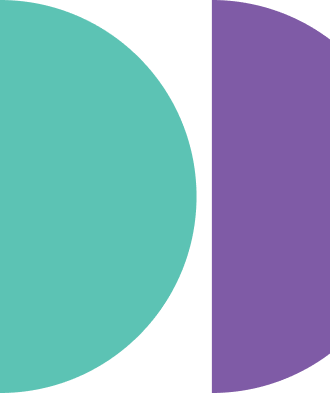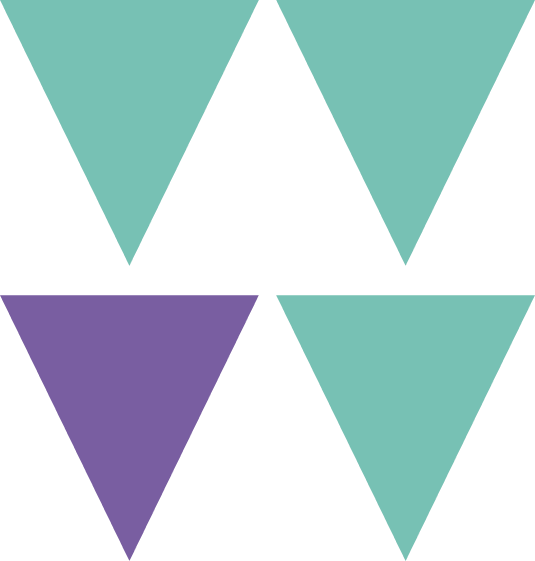Late last year, I hosted a dialog session with fellow aequilibrium team members to explore the relationship between designers and developers working together on project teams. Project team dynamics have been a topic of interest in the community, particularly within digital product agencies where efficiency, communication, and understanding amidst teams are direct results of the output. In my conversation, I uncovered new truths, creative insights, and surprising discoveries.
Breaking down silos.
The idea to host a dialog first came about when Director of Product Design Matthew Corstorphine introduced me to the notion of silos. Silos are notorious in the world of organizational culture, and as such, have been cautiously avoided by leadership teams. Simply put, silos create walls and more than ever, walls are not the solution.
Silos refer to the lack of communication between departments of people.
They refer to departments of similar minded and same disciplined individuals, such as designers or developers. What happens is that these groups become so tightly bonded in their own processes and thoughts that they begin to neglect the considerations or prospects of others outside of their working circles. Silos, therefore, refer to the lack of communication between departments or people as a result of their individual (siloed) team bonding.
I originally set out to validate our team’s project collaboration process and share, through our blog, how our process works. I understood that design and development were two sides of the same coin and that the more isolated they were from one another, the more challenging bringing projects together would be. I hypothesized that our solution to great teamwork was by eliminating silos and mindfully integrating smart team processes into the workflow of our Agile sprints to create transparency and bridge gaps.
A mutual understanding.
I decided to meet with the aequilibrium team of designers and developers that had recently finished work on the Sneaker Con web portal and iOS app. This project was the last project completed at the time of interview and the team had overcome some interesting hurdles that I foresaw to be valuable in my dialog.
I used a process called dialog to meet the objective. Dialog is an unfolding process of transforming and deepening understanding of others and ourselves through listening, sharing and questioning. The process learned during my formal undergraduate studies in Communication and Dialog at Simon Fraser University is intended to lead to trust, respect, and the building of a shared future. At the same time, it is meant to clarify any disagreements.
Sneaker Con.
Here are snippets from my interviews with members of the Sneaker Con team.
Lorenzo is a Senior Web Developer at aequilibrium. One of the first employees at the company, Lorenzo has been here for just shy of five years. I asked him about his experience working on Sneaker Con.
[L O R E N Z O] Oh man. Sneaker Con. What a project. I learned a lot. Probably the biggest takeaway for me was figuring out how to work well as a team. I mean, I worked on the web portal, which was actually a separate component to the mobile iOS app, but a big part of the project nonetheless. What I appreciated about working on this project was how collaborative and inclusive it was regardless of the role or department that you were in; there were no silos. Even though I was technically working on a different part of the project, I was still part of the same workflows and conversations with the rest of the team.
[ E M I L Y ] You mention the term silos, which is kind of a notorious word in the industry right now. Everyone is trying to eliminate silos and you’re telling me that you guys have found the solution?
[ L O R E N Z O ] It’s constantly in flux, but I think for the most part we have. I mean, one of the big silos we faced before was between the front and back end developers. Previously, we held separate meetings between the two teams, but then we would constantly find these overlaps or missing gaps between the work. So, in a process of discovery, Mike, our PM, pioneered the first joint developer meetings where frontend and backend developers would meet together in one meeting to address any shared challenges while also efficiently tackle any new opportunities. I guess we were lucky that we all got along– I think to have good folks that you get along with and trust to work with plays a big part in getting rid of silos and the overall outcome of the project, and we had that for Sneaker Con.
[ E M I L Y ] I know this process has been implemented into more recent projects since Sneaker Con, so it’s cool to see progress in action. But I can’t help but think about other potential silos on this team. I think the most common silo in the industry is actually between developers and designers. There was also a developer, Gavin, who was working remotely for the entire duration of the project from Kamloops, and one QA developer, Benson, who had his own workflows during the project, as well. What are your thoughts on these individuals and their place within the team?
[ L O R E N Z O ] Gavin was always part of the daily huddles and the team meetups even though he was never physically here. Technology probably had a big role in breaking down the location barrier because it enabled clear and seamless communication. High Five is a tool I highly recommend– it’s so clear you often forget you’re not actually in the same room. As for Benson and Liv, our designer, I don’t think they ever felt siloed because they were always in communication with everyone.
Lorenzo had some really interesting points, like hiring good people from the get-go– people who can be accommodating– in order to set a good foundation for work relationships, and using communication tools that enable strong team collaboration. My next interview was with Liv Tapper, UI/UX Designer at aequilibrium. Liv has been working here for just over a year and Sneaker Con was her first big project.
[ L I V ] It’s an interesting topic, and I don’t think that it gets enough attention given the presence that team dynamics have in the workplace. Designers tend to work independently, especially at aequilibrium, because we work on different areas of the product. We’re also two weeks ahead of development, so quite autonomous in this regard.
[ E M I L Y ] There were 3 frontend and 3 backend developers on the Sneaker Con project, and of course one PM and QA engineer. How many designers were there?
[ L I V ] I was the only full-time designer assigned to work on the project; however, I did have the constant support of Matt, our Director of Product Design. We have daily huddles and weekly sync-ups, and I’ll always run any ideas, issues or blockers past him. People’s view of silos would depend on where they fit in the team. When there are 8 developers and 1 designer, it’s natural to feel you are in a silo, it’s the nature of the team dynamic and being the minority.
[ E M I L Y ] That’s a really interesting point.
[ L I V ] I do think that it’s an evolving process; I mean, aequilibrium is only 6 years old and for some of us working on Sneaker Con, it was our first time working together building an iOS app. We won’t ever grow if we don’t open ourselves up to the world, learn, and communicate these feelings and findings that we discovered during this project– so thank you for giving us this opportunity to reflect and share.
A discovery process.
Reflecting back to what Lorenzo said, it’s really a process of discovery. It’s about learning and figuring things out and applying it to the next great project ahead. Most of the team moved together from Sneaker Con on to the next project, and processes have been able to evolve and the team has been able to learn from challenges.
Research shows that nine out of ten times, it’s about compromise. We all have a huge amount invested in the product and we are also all working towards the same outcome. Leveraging communication and nurturing a relationship is, therefore, one of the most important takeaways.
It’s important to share these reflections with the rest of the company and the community at large so that we can all learn. Collaboration is the key to building better, more informed tech solutions.
Special thanks to Mike G. and Kehuan for also speaking about their experiences.





